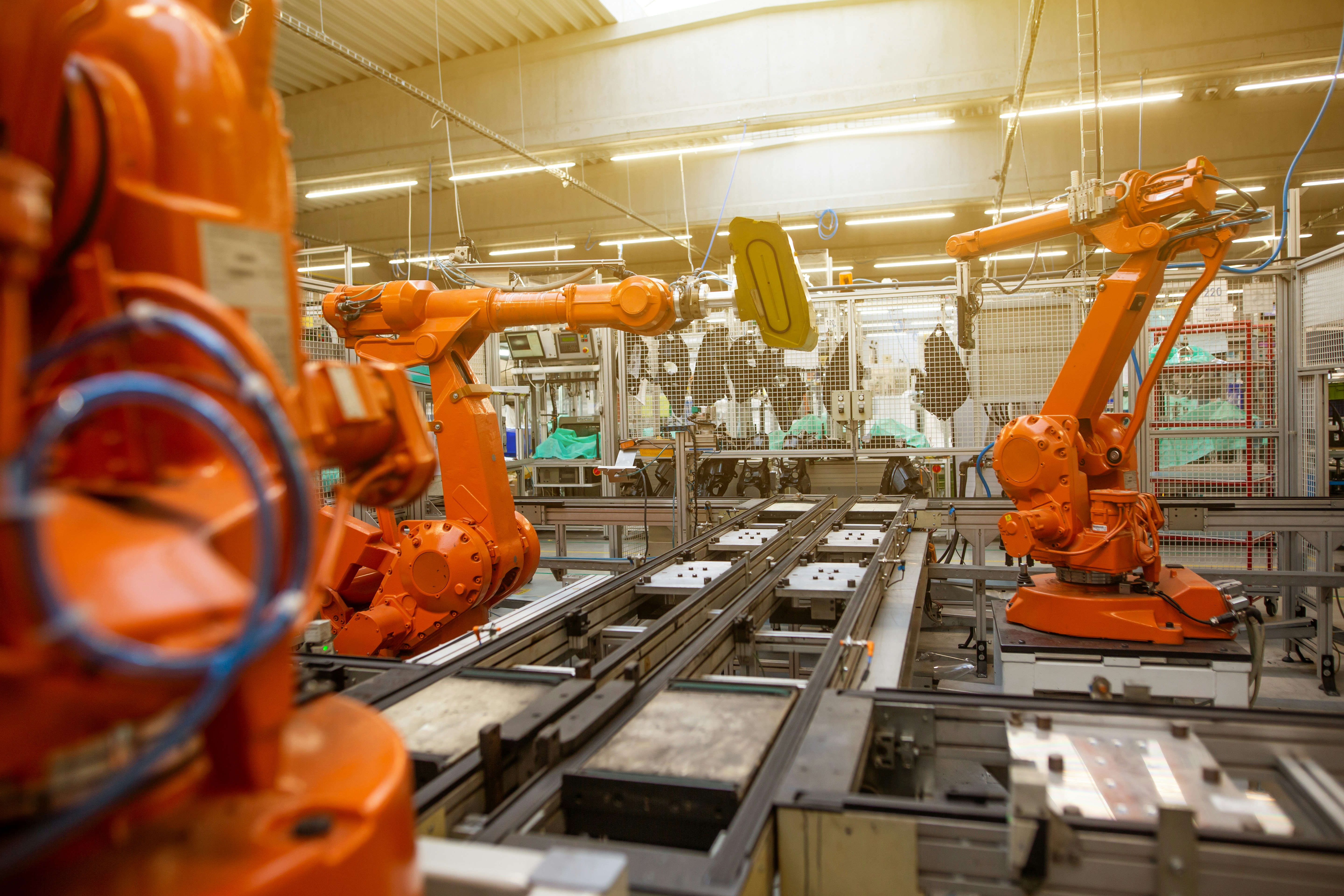
Job-Hunting During Economic Uncertainty: Robotics Edition
Robotics has emerged as a key frontier in modern technology, bridging mechanical engineering, software development, artificial intelligence, and automation. From manufacturing floors using robotic arms for assembly, to healthcare robots assisting in surgeries, to drone-based inspection systems, robotics expands the boundaries of innovation and efficiency. However, when the broader economic climate faces uncertainty—through global downturns, cautious investor appetites, or unexpected financial constraints—this can impact the robotics job market. Companies may become more selective, cautious with budgets, or narrow the scope of their robotics-related projects.
For aspiring or experienced robotics professionals, this environment can lead to fewer published vacancies, fiercer competition for roles, and an emphasis on demonstrating real-world impact. Yet robotics retains substantial importance across industries striving to reduce costs, enhance safety, and increase productivity – all crucial factors in economically stressful times. This guide aims to:
Examine how economic instability affects robotics roles and hiring.
Share practical tactics to distinguish yourself from other candidates.
Reveal ways to highlight achievements, adapt your expertise, and network effectively.
Recommend approaches to stay committed and confident if your job search extends.
Show how www.roboticsjobs.co.uk can help you locate openings suited to your skill set.
With the right mixture of relevant technical expertise, adaptability, and a focus on tangible benefits, you can secure a fulfilling robotics position—even during a challenging financial landscape.
1. Understanding the Impact of Economic Uncertainty on Robotics Hiring
1.1 Realignment of R&D and Investment Priorities
Robotics initiatives often involve considerable R&D budgets, be they in new hardware, control software, or advanced AI integration:
Start-ups and Scale-ups: Venture-backed robotics ventures may reduce expansions, concentrate on near-term revenue or proven products, and postpone riskier R&D.
Established Firms: Large manufacturing or tech corporations might re-evaluate which robotics projects are necessary or profitable in the short term, scaling back or delaying more experimental lines.
1.2 Shifting Project Emphasis
When budgets are tight, robotics roles focusing on immediate cost savings or tangible return on investment (ROI) tend to withstand cuts:
Automation for Efficiency: Factories needing to reduce labour costs or enhance precision keep investing in robotic solutions.
Maintenance and Inspection: Sectors such as energy, infrastructure, or logistics maintain – or even expand – their use of robotic inspection or maintenance systems to mitigate risks and save operational costs.
1.3 Increased Competition for Limited Roles
If there are fewer new robotics roles:
Broader Backgrounds: Mechatronics engineers, software developers pivoting into robotics, AI specialists, and mechanical designers may all compete for the same job, adding complexity to the selection process.
Heightened Bar: Employers may be more particular, wanting hires who can handle multiple tasks – e.g., designing hardware, programming motion controls, or integrating machine vision sensors – rather than employing separate specialists.
1.4 Temporary and Consultancy Models
To sustain robotics progress without committing to expanded permanent teams, some companies choose:
Short-Term Contracts: Engaging robotics experts for set deliverables, like a pilot production line upgrade or a new robotic deployment proof-of-concept.
Collaborative Consortia: Partnerships among universities, government bodies, or private corporations can yield shared R&D posts, often with fixed durations aligning with project grants.
2. Tactics to Stand Out in a Tighter Robotics Market
2.1 Focus on Real, Measurable Impact
Beyond theoretical knowledge, employers appreciate tangible outcomes from your robotics experience:
Cost or Time Savings: Show how your system integration or design modifications boosted throughput by, say, 20%, or halved labour overhead for repetitive tasks.
Reliability and Safety: Point out if your robot solutions replaced hazardous manual work, increased accuracy in assembly, or lowered downtime, illustrating how each improvement ties into business success.
2.2 Prioritise In-Demand Subfields
While some R&D lines may pause, others can grow or remain stable:
Industrial Automation: Established manufacturing settings, from automotive to electronics, rely on robotics to cut costs and maintain productivity – crucial concerns under economic stress.
Service Robots: In healthcare, logistics, or hospitality, certain service-oriented robots remain in demand, especially if they address pressing needs like remote assistance, patient safety, or contactless delivery.
Drones and Field Robots: Agriculture, mining, and infrastructure inspection require robotic systems for tasks in hazardous or remote areas, leading to consistent or growing interest.
2.3 Build and Nurture Your Professional Network
Networking remains invaluable:
Robotics Communities: Join or stay active in robotics meetups, Slack channels, or online forums. Participate in discussions, share insights, and watch for job leads.
Conferences or Exhibitions: Events like automatica, Robotics Summit, or smaller UK-based gatherings can let you engage with potential employers or collaborators, many of whom attend looking for fresh talent.
Academic/Industry Ties: Former supervisors, research partners, or professional associations can provide leads on new robotic labs, spin-offs, or expansions.
2.4 Refine Your Online Profile
When roles are few, a crystal-clear digital presence sets you apart:
Up-to-Date CV: Emphasise your relevant sub-domains—like embedded systems, motion planning, machine vision, or control algorithms. If possible, quantify achievements (e.g. “Integrated a robotic arm that improved packaging speed by 25%”).
Portfolio or Video Showreel: If permitted, share video demonstrations or images of your robotic designs, prototypes, or completed systems in action. Visual proofs often resonate strongly.
Recommendations: Ask previous managers or colleagues for endorsements on your design approach, coding quality, or success in real-world deployments.
2.5 Demonstrate Flexibility and Adaptability
Companies often seek professionals who can handle multiple facets of robotics in uncertain times:
Multi-Disciplinary Skills: If you can manage mechanical design, electronics, and low-level software or troubleshooting tasks, highlight it. Such breadth may reduce an employer’s overhead.
Remote or Contract Work: A short contract building or programming a robotic subsystem keeps your skills fresh and can lead to more secure roles once budgets loosen.
Geographical Openness: Some robotics tasks, especially R&D, may require on-site presence in labs or factories, but being open to partial relocation or flexible travel can widen your job options.
2.6 Commit to Continuous Learning
Robotics evolves quickly:
New Tools and Libraries: Undertake short courses on popular frameworks (ROS, OpenCV, TensorFlow for robotics), advanced motion control, or agile hardware design if that’s relevant.
Certifications and Workshops: Earning micro-credentials in robot safety standards or relevant mechanical/electronic certifications can give you an extra edge.
Open-Source Contributions: Platforms such as ROS (Robot Operating System) have active communities. Contributing bug fixes, features, or tutorials demonstrates your engagement.
3. Staying Motivated If the Search Prolongs
3.1 Prepare for Slow Hiring Decisions
When the economy is shaky, staff expansions can be paused or carefully measured:
Tailored CV: Each submission should clearly connect your past robotics achievements to the role’s specific domain—like autonomous vehicles, collaborative robotics, or medical robotics.
Polite Persistence: If you haven’t heard back in a couple of weeks, send a friendly note reaffirming your interest. Hiring managers may be ironing out budgets or adjusting project timelines.
3.2 Rejections and Their Lessons
Not every application results in success, yet each can offer insights:
Feedback: Some recruiters or interviewers point out areas to improve—like lacking advanced ROS customisations or insufficient grasp of mechanical tolerance analysis.
Pattern Recognition: If you consistently stumble in hardware test discussions, consider adding a micro-course on advanced electronics or mechanical design fundamentals.
3.3 Lean on Mentors and Peers
A protracted job search can sap confidence:
Network Support: Friends, ex-colleagues, or academic mentors can share fresh angles on your approach or alert you to unadvertised roles.
Professional Career Help: Engaging a coach familiar with engineering or advanced tech can help refine your interview technique, prevent burnout, and keep you mentally focused.
3.4 Maintain a Robotics Mindset
Idle periods needn’t sideline your passion:
Personal or Open-Source Projects: Build a small indoor navigation robot, experiment with advanced vision algorithms, or contribute to open-source robotics code. Show these on GitHub or a personal site.
Focus on Industry Updates: Keep up with the new wave of sensors, cobot developments, or any notable trials or pilot programmes in the UK. In interviews, referencing these reveals your readiness for current challenges.
4. Practical Steps to Enhance Your Robotics Applications
4.1 Tailor Your CV to Robotics Key Phrases
Applicant Tracking Systems (ATS) often parse for specific robotics or engineering terms:
Robotic Ecosystems: e.g. “ROS,” “ROS2,” “Gazebo,” “OpenCV,” “PCL,” “motion control,” “PLC programming,” “hardware integration.”
Hardware/Software Tools: e.g. “SolidWorks,” “MATLAB/Simulink,” “C/C++ embedded systems,” “Python for sensor data analysis,” “TensorFlow for robot perception.”
4.2 Highlight Quantified Achievements
Recruiters want impact:
Productivity: “Implemented robotic arm that cut assembly time by 25%” or “Upgraded sensor fusion software, reducing detection errors by 40%.”
Safety/Quality Gains: “Eliminated manual checks in hazardous area, boosting worker safety and cutting inspection times in half.”
4.3 Employ Effective Storytelling in Interviews
Technical depth is crucial, but so is clarity:
The STAR Approach: For instance, describe a complex custom automation project: The Situation, your Task, the Actions you took, and the final Result (such as cost savings, precision improvements, or a new product line).
Balance: Explain advanced technical points (e.g. Kalman filters for sensor fusion, inverse kinematics solutions) while also referencing cost or reliability benefits.
4.4 Remote or Hybrid Interview Prep
Virtual interviews are standard:
Professional Setup: Check your camera, microphone, and environment. Ensure you have a stable Internet connection if presenting slides or code.
Hands-On Tests or Simulations: You might face an online coding test or a scenario-based hardware question. Verbalise your approach—design considerations, coding style, safety margins.
4.5 Follow Up Positively
A concise, genuine note afterwards, referencing a specific detail from the interview, shows thoroughness and courtesy—traits often prized in robotics work, where attention to detail can be paramount.
5. Using www.roboticsjobs.co.uk for Focused Searches
www.roboticsjobs.co.uk provides niche advantages when the market is tight:
Specialist Listings: Rather than rummaging through generic engineering adverts, find roles specifically needing robotics engineering, software integration, hardware design, or robotic process automation.
Sector Insights: The site’s resources—blog content or job-hunting tips—can help you identify stable or emerging areas, from collaborative robots in manufacturing to UAV-based robotics.
Visibility to Recruiters: By creating or refining a profile, you raise your chances of being found by hiring managers deliberately searching for roboticists.
Community: Some platforms support Q&A, highlight success stories, or host events—giving you a sense of belonging and direction during uncertain times.
6. Conclusion: Navigating a Robotics Career Despite Economic Challenges
While economic strains can momentarily reduce or delay robotics-related hiring, the essential nature of robots in solving practical problems—improving efficiency, lowering costs, and enhancing safety—keeps the field alive. By underscoring tangible value (like cutting labour expenses or generating new revenue streams), demonstrating your adaptability across mechanical, software, and operational dimensions, and making your relevant achievements highly visible, you can secure a compelling role in robotics, no matter the financial climate.
Furthermore, drawing on the resources of www.roboticsjobs.co.uk, a dedicated site for robotics opportunities in the UK, allows you to zero in on roles matching your niche skillset—be it machine vision, embedded control, or automation integration. Adopting the recommended strategies—refined CVs, robust project portfolios, thoughtful networking, and relentless self-improvement—positions you to thrive in robotics, continuing to develop next-generation solutions despite uncertain conditions. And once economic conditions brighten, you’ll be well-placed to advance within this dynamic, future-facing sector.


